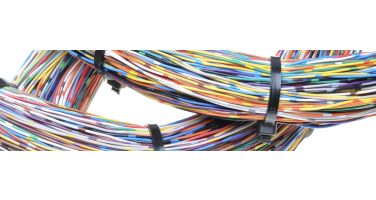Fibre Optic broadband has been in the news a lot recently, and lots of people will have noticed their internet speeds have increased in recent years too.
But there is still a lot of confusion about what Fibre Optic broadband is, what it does and why it is better.
Different providers give it different names – fibre broadband, superfast broadband, unlimited broadband – but fibre optic broadband is essentially any internet service that is delivered by fibre optic cable instead of traditional copper telephone wires.
Fibre optic cables are network cables that are made glass or plastic. They have a higher bandwidth than traditional network cables, which means that more information can be transmitted through them at once.
They can also be used to transmit data more efficiently over long distances.
Essentially, fibre optic cables are faster than their traditional counterparts, meaning faster browsing and downloading speeds for fibre broadband customers.
Well, in theory at least.
Different Types Of Fibre Optic Broadband
For domestic customers, there are two main types of fibre optic broadband. And the difference is quite important.
The most common type of fibre optic broadband is called fibre-to-the-cabinet (FTTC). This is where the cable from the telephone exchange to the green cabinet on your street is a fibre optic cable.
The second type is called fibre-to-the-home/premises (FTTH/P) where, as the name suggests, the fibre optic cable runs all the way up to your door. FTTH/P broadband is faster than FTTC, but it is not widely available outside of large cities.
Some specialist companies that provide FTTH/P broadband to city centre businesses and apartment blocks can deliver speeds in excess of 1GB/s. This is more than three times the top speeds advertised by BT (300MB/s).
FTTC will increase internet speeds for most domestic customers, but your internet speed could be compromised if you live far away from the closest ‘green box’.
What Is The Fibre Installation Controversy?
The biggest problem with fibre broadband, and the reason it has caused so much controversy, is that it isn’t installed everywhere yet.
It took many decades to get copper telephone wires rolled out across the whole country and now someone needs to replace them all with faster fibre optic cables.
This takes time and it is expensive. So far, the installation has been concentrated in areas where there are the most potential customers – in towns and cities.
But many less populace areas have been overlooked. One industry insider recently admitted that some rural internet users may never get superfast internet.
Lots of internet providers have expressed frustration with the pace of the fibre optic cable rollout.
BT Openreach is the company tasked with that rollout. It was recently forced to ‘legally separate’ from its parent company BT following complaints from other internet providers that use their infrastructure like Sky and TalkTalk.
Industry experts believe that this will lead to an acceleration of the fibre optic rollout in the future.
Can I Install Fibre Broadband Myself?
Many people in rural communities have lost patience with the private telecoms providers and have decided to install their own fibre broadband systems.
Community groups and specialist companies like Broadband for the Rural North put the necessary infrastructure in place for rural households to get access to fibre broadband at good prices.
Installing your own fibre isn’t easy. It takes a lot of digging equipment, a fair degree of technical know-how and probably a lot of good friends who are willing to help out. But if you are sick to death of slow internet, and nobody seems to be doing anything about it, then it might just be worth having a go.





